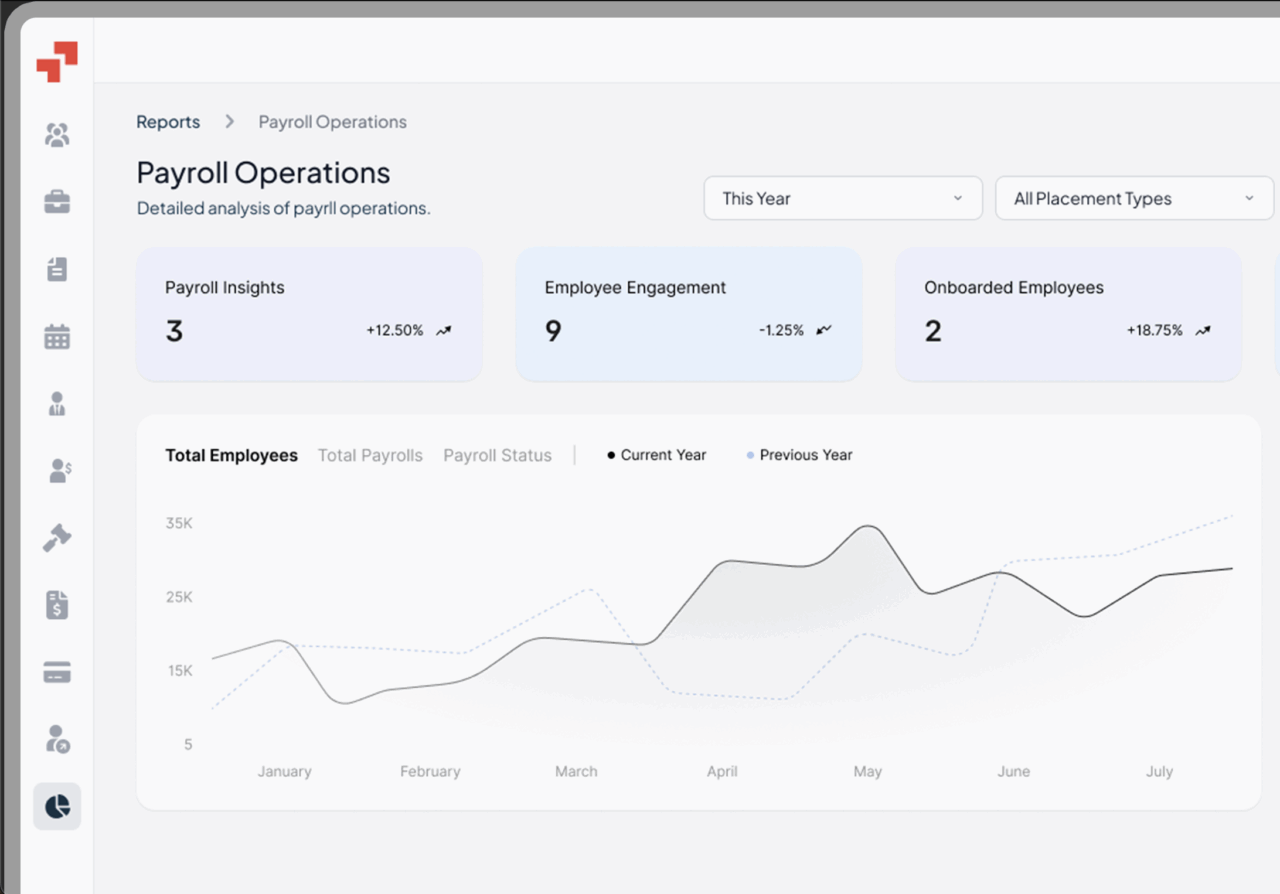Global Workforce GlossaryProbationary Period
Related Terms
Employment Agreement
Notice Period
Onboarding
Indefinite Employment Contract
Conditions of Employment
Starting a new job and establishing an employment relationship is exciting but can also be stressful. Both employers and employees, as well as other employees, need time to see if the match is right. A probationary period bridges this gap, providing a structured timeframe to evaluate performance, cultural fit, and mutual expectations before confirming long-term employment. It helps ensure that both the company and the employee make informed decisions without long-term commitments.
Table of Contents
- What is co-employment?
- What are co-employment laws?
- Why is co-employment a risk?
- What are co-employment rules
- Co-employment do’s and don’ts
- How does co-employment work?
- What is the difference between co-employment and joint employment?
- Co-employment vs PEO
- Co-employment vs employee leasing
- Is co-op considered a full-time employee?
- Is it illegal to work for two jobs in the same industry?
- Co-employment examples
- Practical Case Study Example
- PamGro and Co-employment: Your Global Partner
What is a Probationary Period?
A probationary period is a predefined timeframe at the start of employment during which employers assess a new hire’s performance, skills, and integration into the workplace. It also gives employees time to adjust to their role, understand expectations, and determine if the new hire’s skills align with the company’s career goals.
During this period, it may not provide sufficient time for some benefits or protections, and notice periods may differ from regular employment terms. Probationary periods are a standard part of human resources practices, particularly in structured onboarding programs for new employees.
How Long is a Probationary Period?
The length varies depending on the role, company, and country, typically ranging from three to six months, or 30 to 180 days. Entry-level positions often have shorter probation periods, while managerial or specialized roles may require longer evaluation.
Some organizations tie probation periods to collective bargaining agreements or local labor laws. For instance, a 90-day initial probationary period is common in many U.S. companies, giving enough time to observe performance, collaboration, and overall fit, while ensuring the employee has same protections as other team members .
What is the Purpose of a Probationary Period at Work?
The main goal of a probationary period is to ensure a good fit between the employee and the organization. Employers use this period to monitor performance, reliability, and workplace behavior.
For employees, probation provides a clear understanding of responsibilities, company culture, and performance expectations. This mutually beneficial approach, which encourages managers to provide feedback, reduces turnover risks and helps build a foundation for long-term success.
What Are the Benefits of the Probationary Period?
Probationary periods offer advantages for both parties:
- Employers: Evaluate performance, identify training needs, and ensure cultural fit.
- Employees: Gain clarity on expectations, receive structured feedback, and adapt to the role before long-term commitments.
Companies with formal probation periods often experience smoother onboarding, better alignment, and higher employee engagement.
Can Employers Extend Probationary Period?
Yes, probation can be extended if the initial period wasn’t sufficient to evaluate performance. Extensions should be documented in writing, clearly stating the reason, new duration, and expectations.
Common scenarios for extensions include training gaps, project delays, or unforeseen circumstances limiting assessment. Employers must ensure compliance with employment contracts and local labor regulations to avoid wrongful termination lawsuits .
What Are Your Rights During a Probationary Period?
Even during probation, employees retain core workplace rights:
- Protection against discrimination and harassment
- Right to a safe work environment
- Minimum wage and labor law protections
However, certain benefits, like paid leave or severance, may be limited until the probation ends. Reviewing your introductory period agreement and clarifying expectations with HR is essential.
Probationary Period vs Elimination Period: Key Differences
Although both involve a form of waiting period, the probationary period and elimination period serve entirely different purposes in the workplace and insurance contexts.
A probationary period is an initial stage of employment during which the employer assesses a new hire’s skills, performance, and overall suitability for the role. It allows both the employer and employee to determine whether the arrangement is a good long-term fit. During this period, employees may not yet qualify for full benefits or job protections. It’s a common HR practice used to ensure that permanent hiring decisions are well-informed.
In contrast, an elimination period refers to a waiting period in insurance policies—particularly in disability or health insurance—before benefits begin. For instance, if an employee becomes unable to work due to illness or injury, they must wait for the elimination period (such as 30 or 60 days) to pass before receiving insurance payouts.
In summary, a probationary period evaluates employment suitability, while an elimination period determines when benefit coverage begins. One applies to employment, the other to insurance, and both serve as risk management tools for employers and employees.
Probationary Period vs Trial Period: What Employers Should Know
Though similar in concept, the probationary period and trial period differ in purpose, duration, and legal implications.
A trial period is generally short-term and less formal, often used for contract, freelance, or temporary positions. It allows employers to test an individual’s performance or compatibility before offering a permanent role. Trial periods typically last a few days to a few weeks and may not include access to benefits, paid leave, or notice protections.
A probationary period, on the other hand, is a structured component of a permanent employment contract, usually lasting between one to six months. It’s designed to evaluate an employee’s long-term potential and integration into the company’s culture. Employees under probation often have limited benefits and simplified termination terms until they successfully complete the period.
The main distinctions lie in legal protections, benefit eligibility, and termination procedures. A probationary period carries formal HR and legal obligations, while a trial period focuses more on performance testing before full employment.
Can You Be Fired During a Probationary Period?
Yes, probationary periods often fall under at-will employment, meaning either the employer or employee can end employment with minimal notice. Termination cannot, however, violate labor laws or discrimination rules.
Employers typically document performance issues, feedback, and termination requirements during the employee’s probationary period to ensure transparency and compliance. Employees are encouraged to seek feedback regularly to improve performance and increase confirmation chances.
How Can Employers Create a Probationary Period Policy?
A clear probationary policy and procedures help set expectations and reduce legal risk. Key steps include:
- Define duration and terms of probation.
- Outline performance evaluation criteria.
- Specify benefits eligibility and limitations.
- Implement regular feedback mechanisms.
- Ensure compliance with labor laws and employment contracts.
A structured approach ensures consistency across HR processes and makes probationary assessments transparent and fair.
What Happens After a Probationary Period Ends?
At the conclusion of probation, employers may:
- Confirm permanent employment with full benefits
- Extend probation for additional evaluation
- Terminate employment if expectations aren’t met
Employees should receive formal feedback and guidance on next steps, often linked to performance appraisals and career development discussions.
Practical Example: Probationary Period in Action
A fast-growing SaaS company recently hired a new marketing manager through its global expansion initiative. To ensure a successful hire, the company implemented a 90-day probationary period as part of the employment agreement.
During this time, the HR team conducted structured onboarding sessions, set measurable goals for the first three months, and organized weekly performance check-ins. The evaluation focused on project delivery, collaboration across cross-functional teams, adaptability to company culture, and the ability to meet campaign deadlines.
By the end of the 90 days, the manager had not only met but exceeded performance expectations- launching two successful product campaigns that boosted lead generation and strengthened team morale. Following this strong performance, the employee was confirmed as a permanent hire, gaining full access to company benefits, bonuses, and professional development opportunities.
This structured probationary period process helped the company reduce hiring risks, improve employee engagement, and ensure long-term retention. It also created a transparent and fair evaluation framework that benefited both the employer and the new employee—demonstrating why probationary periods remain a valuable tool in effective global workforce management.
How PamGro Supports Probationary Periods
PamGro helps businesses hire and manage international employees without establishing a local entity. During probation, employers can refer to the employee handbook to ensure they are following proper procedures.
- Legally hire and evaluate talent in compliance with local labor laws
- Manage contracts, payroll, and benefits efficiently
- Extend probation periods or transition employees seamlessly to permanent status
With PamGro, HR teams can focus on talent evaluation rather than administrative complexities, making probation management and global hiring straightforward and risk-free.
Probationary Periods: FAQs & Common Misconceptions
No, it’s a trial phase to assess fit, not a promise of long-term employment.
Some benefits may be limited depending on company policy and local labor laws
Yes, senior or specialized roles often have longer probation periods than entry-level positions
Hire the Best Talent, Anywhere






